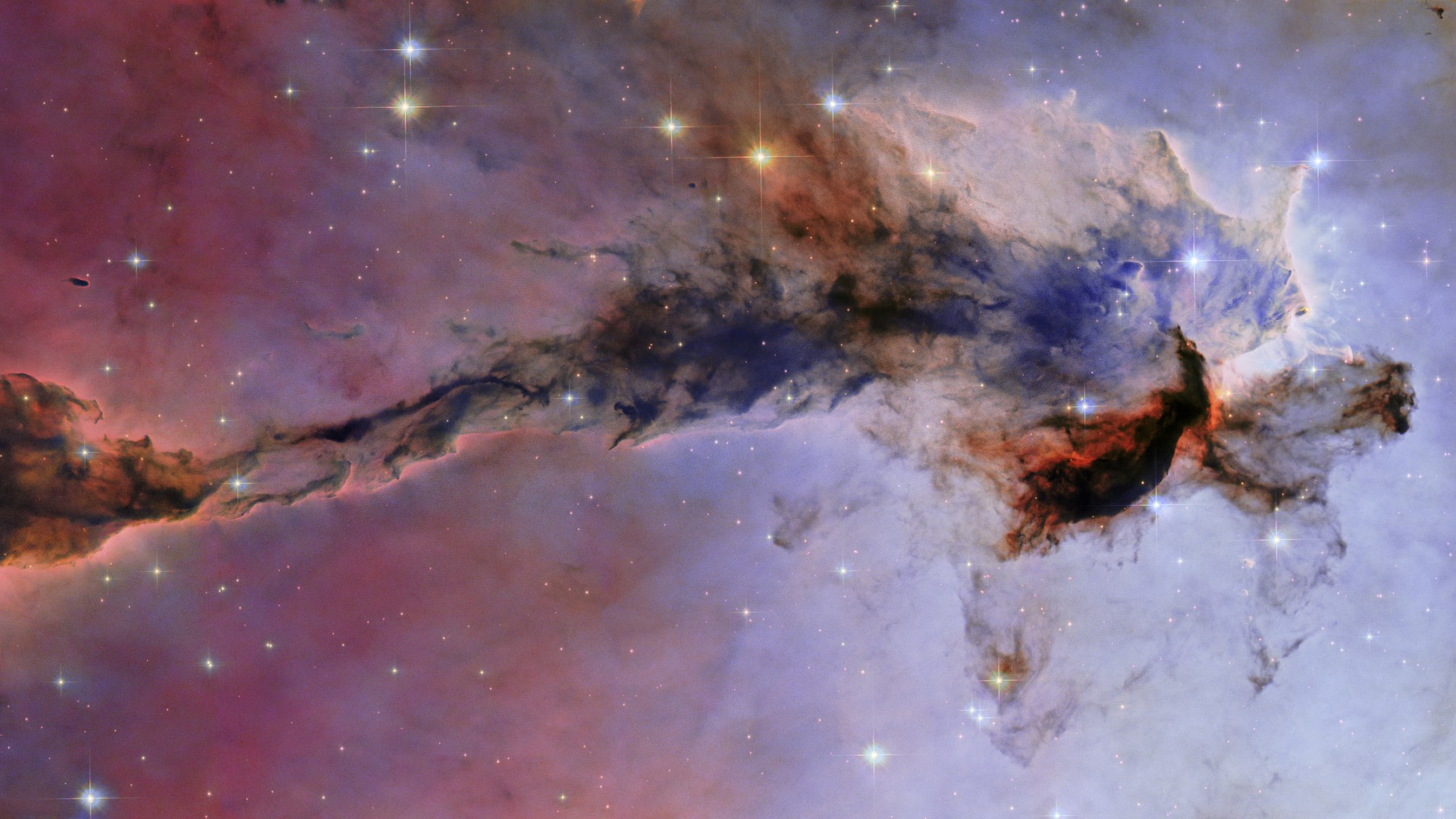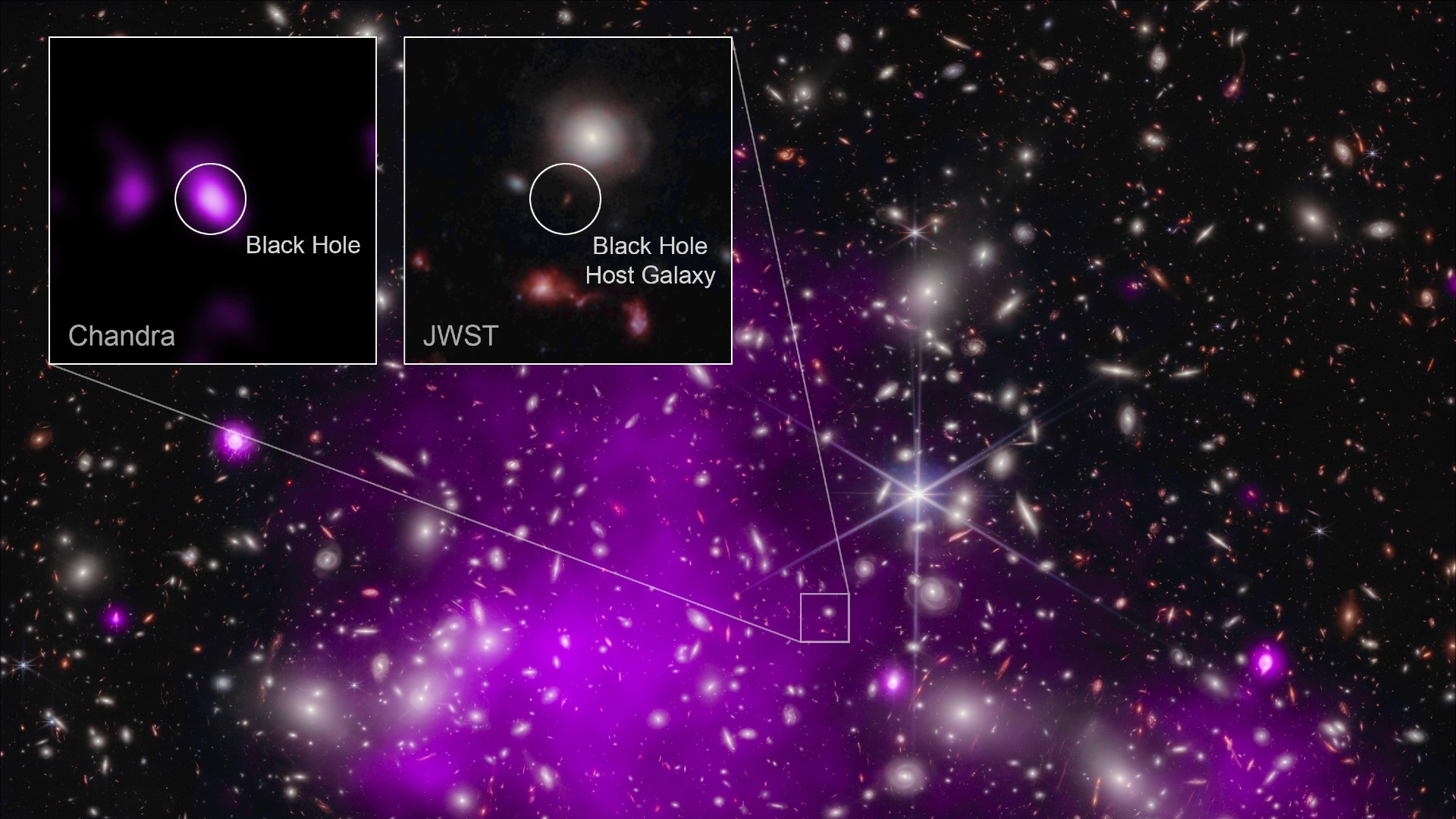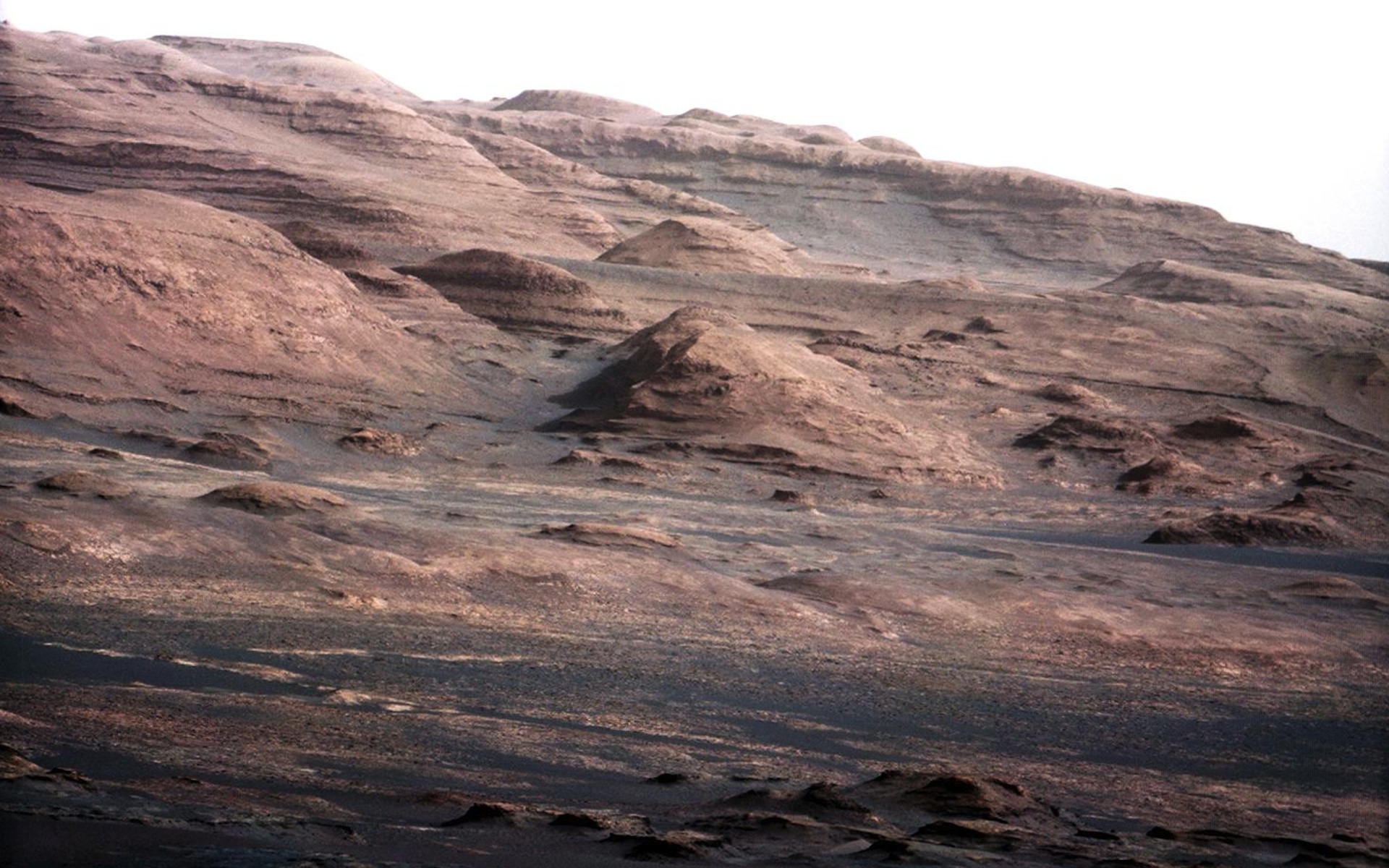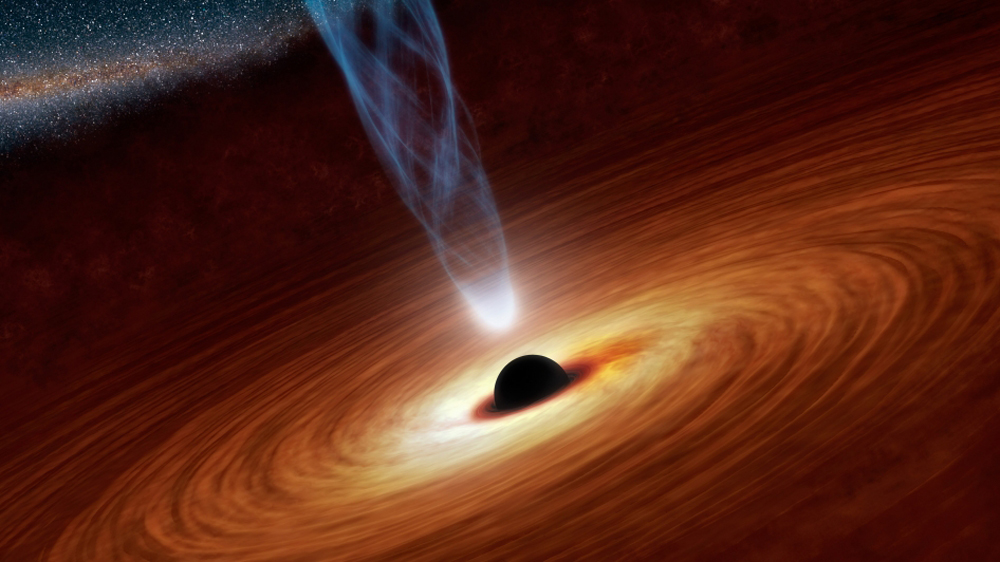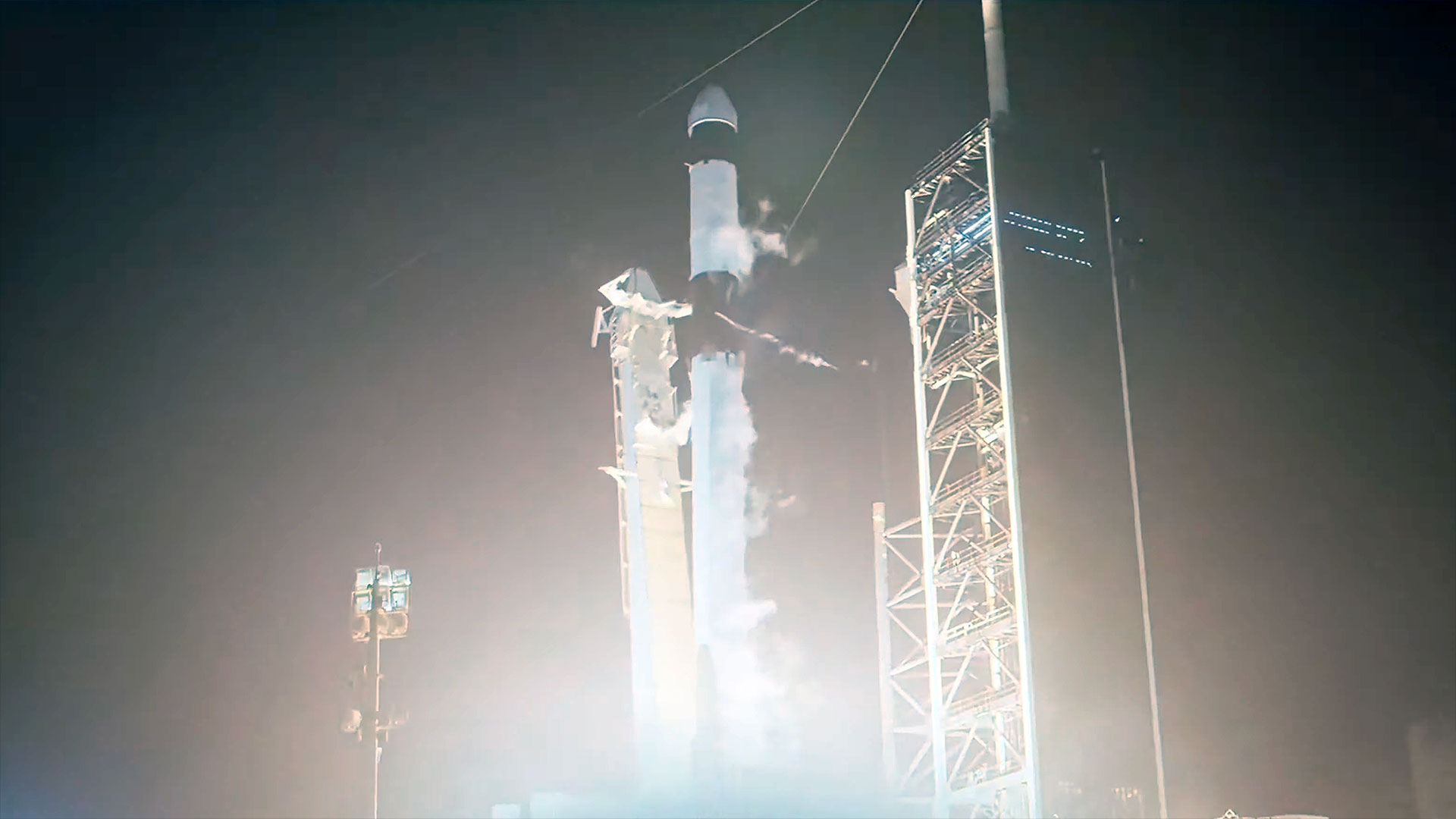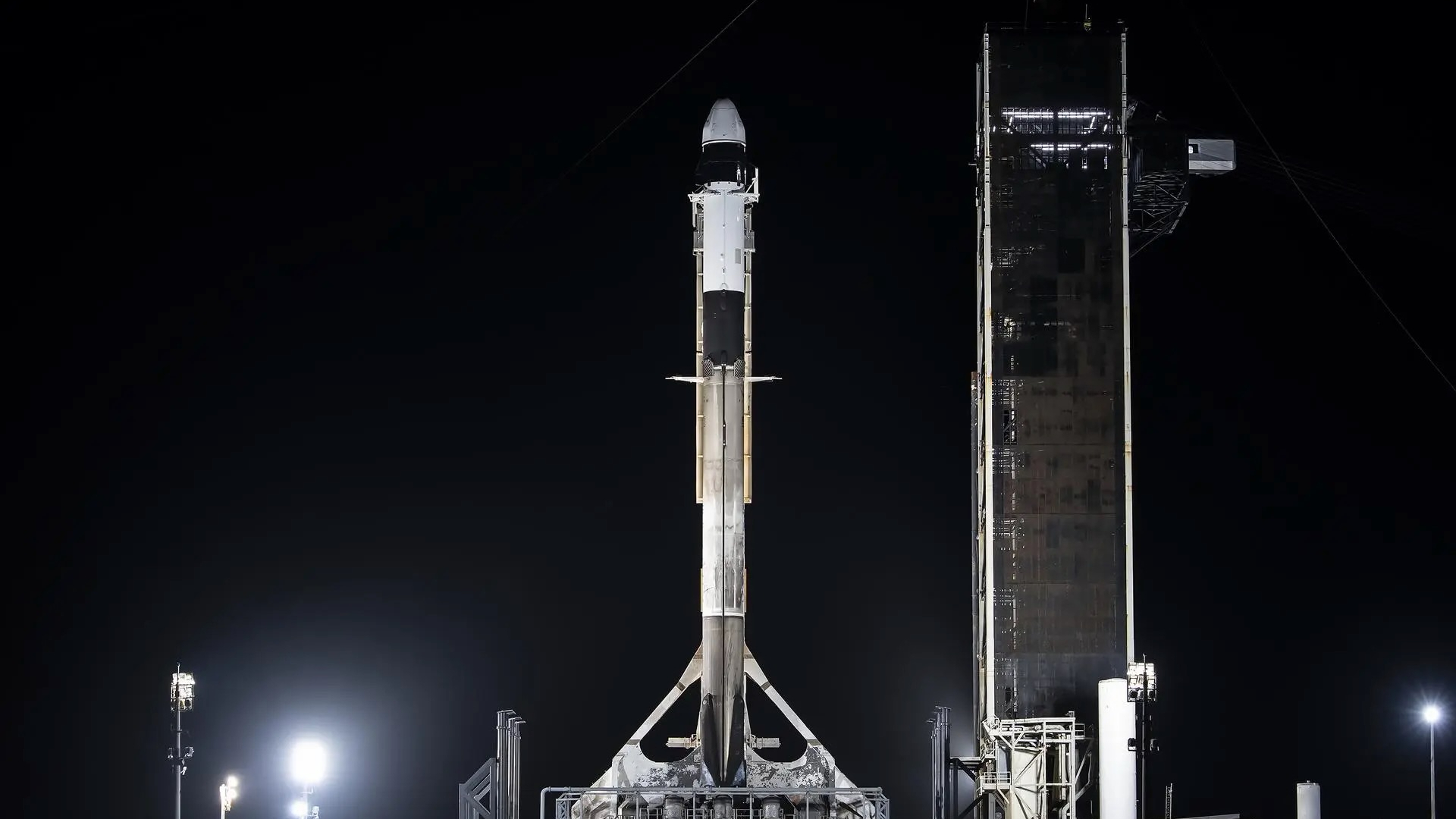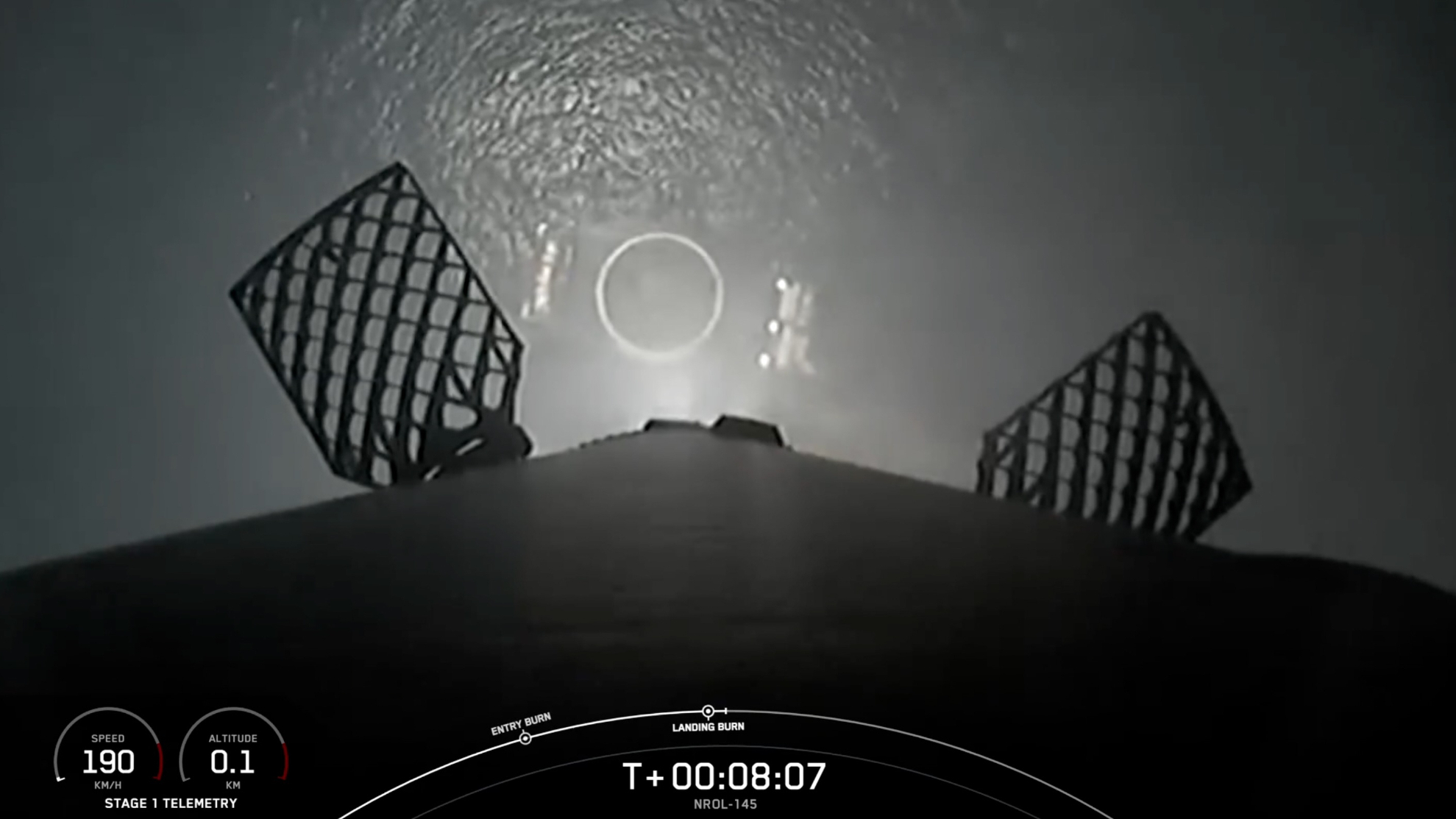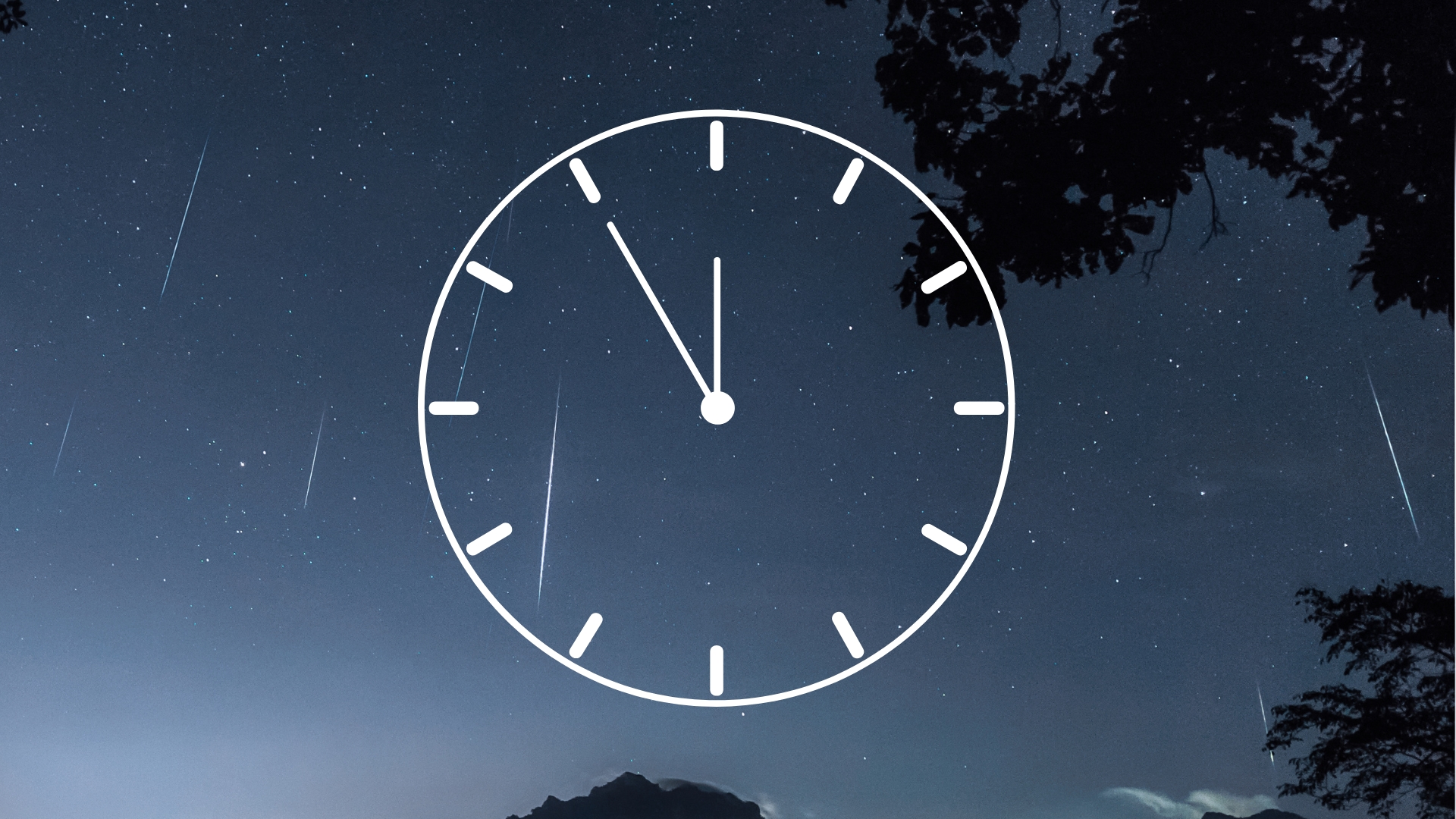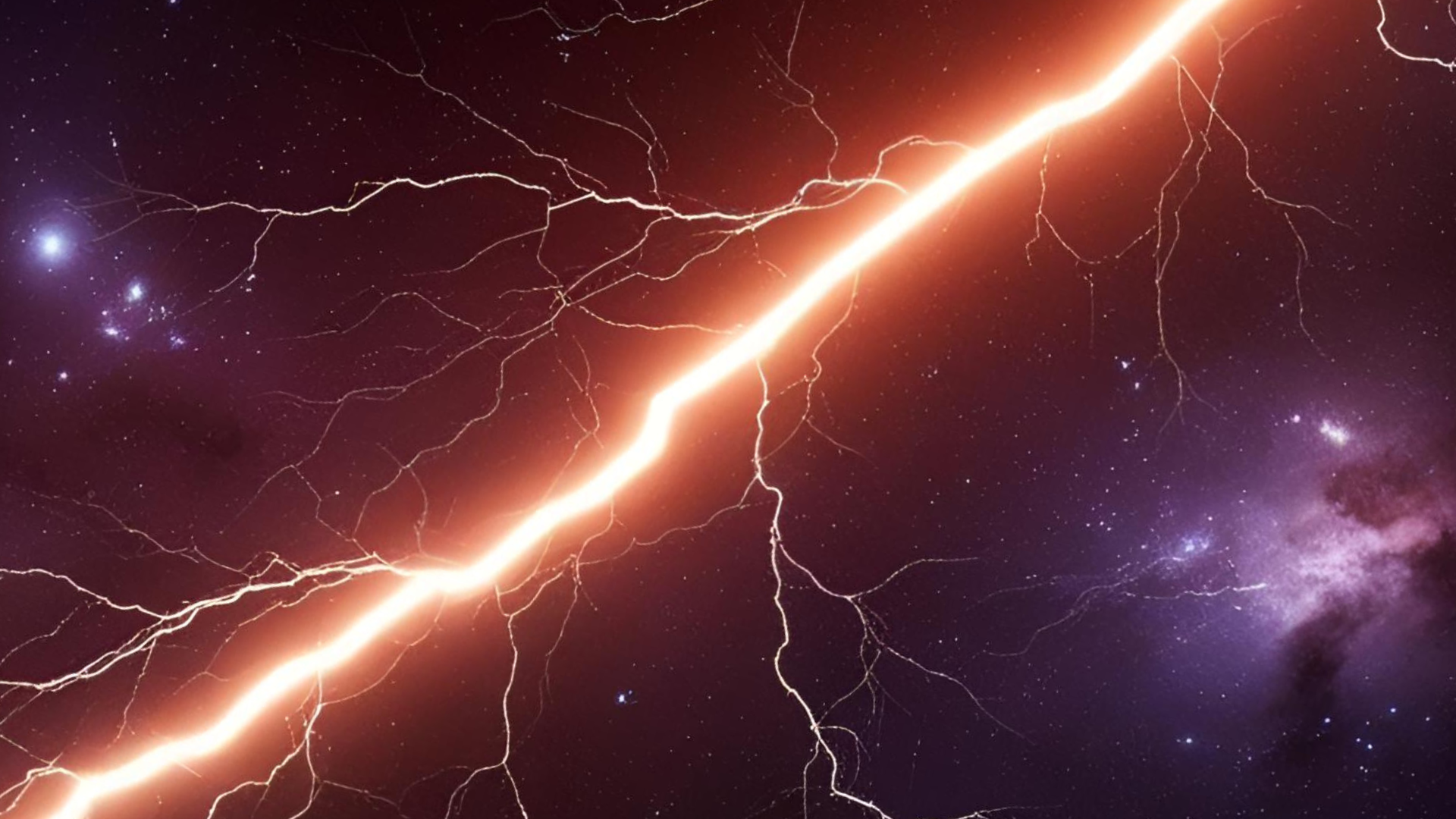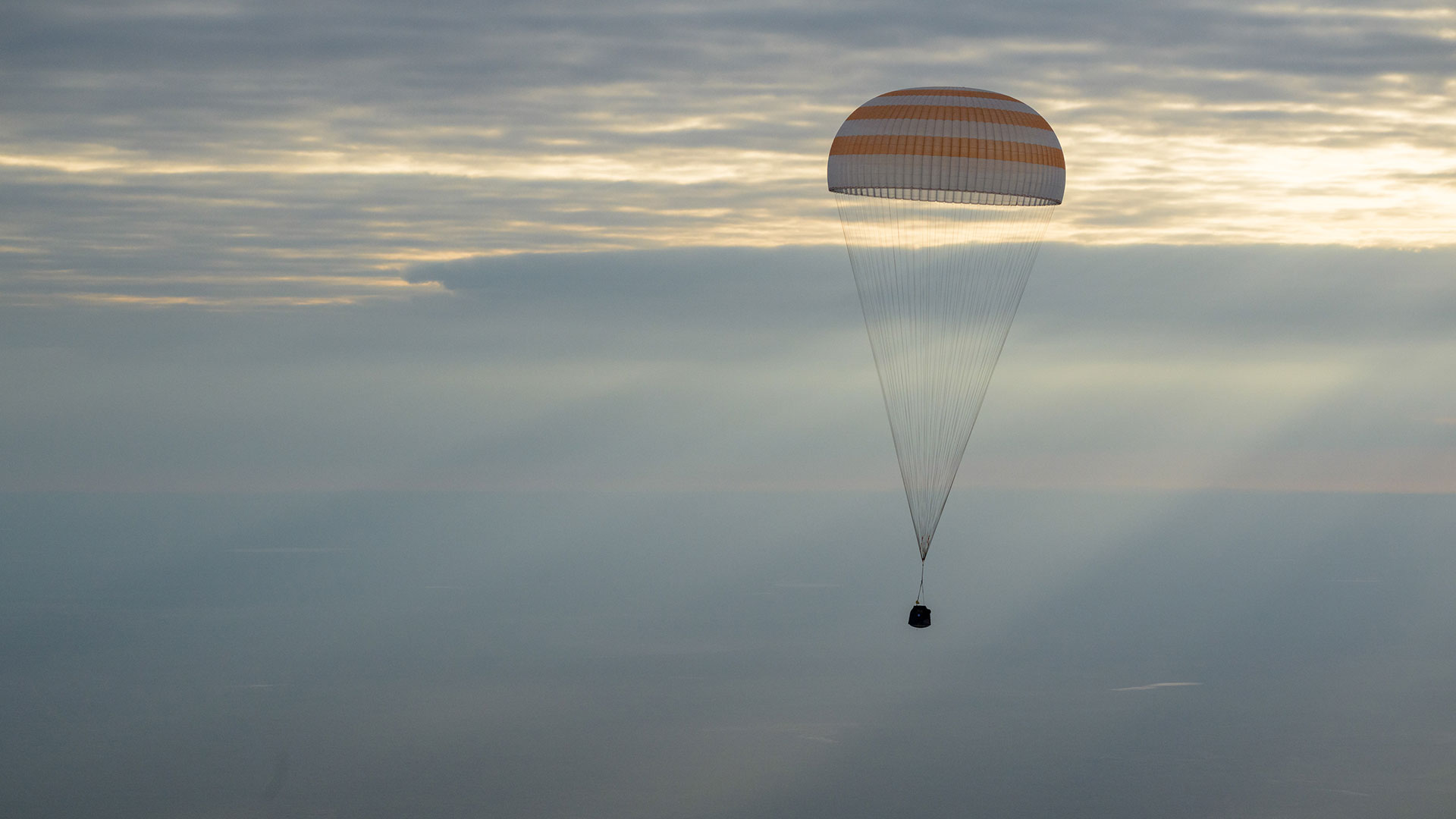Hubble Telescope spies newborn stars in famous Orion Nebula (photo)
"The protostars are midway down the path to becoming mature stars."
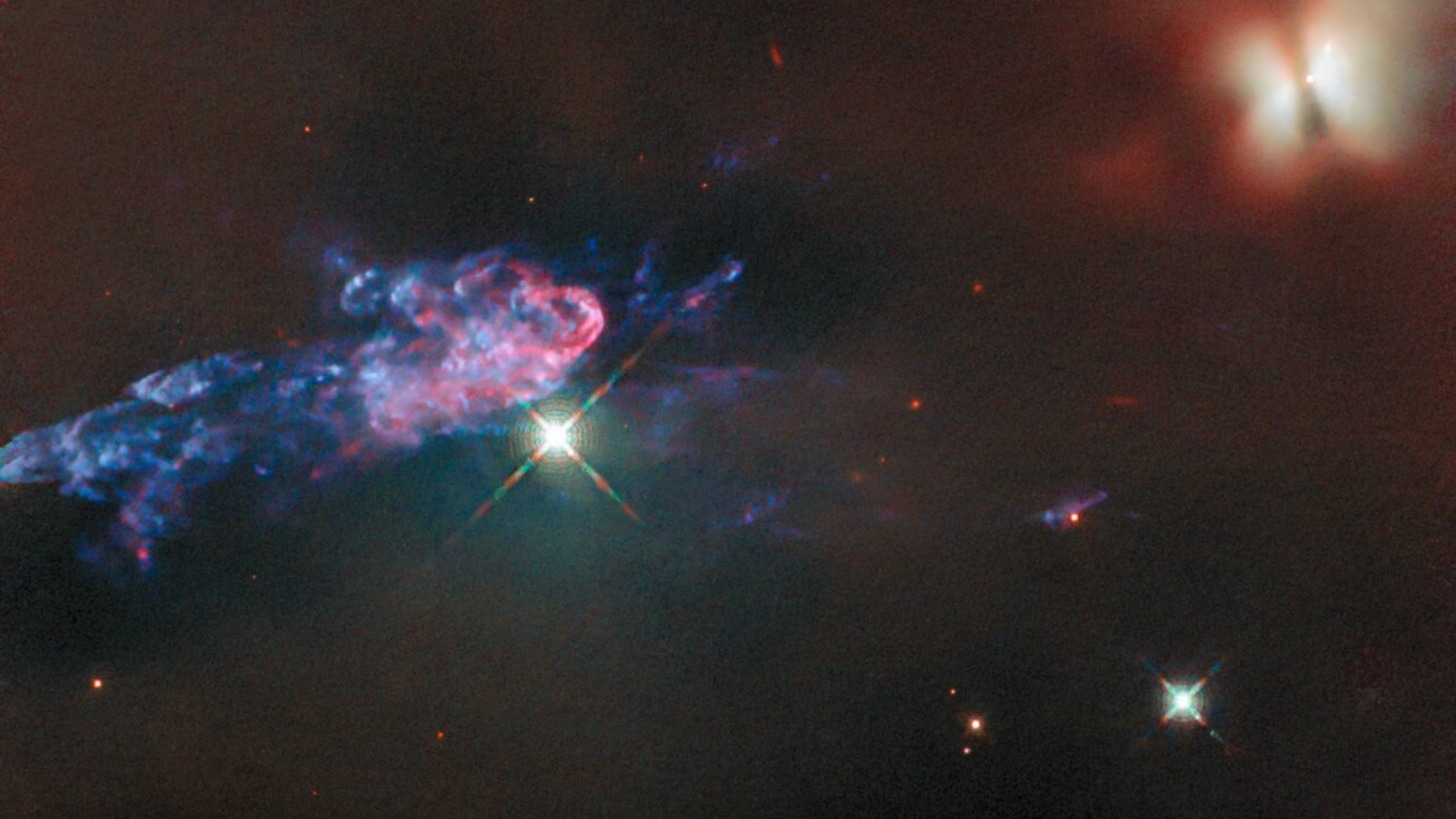
Two young stars shine bright in the dusty depths of the Orion Nebula in a new Hubble Space Telescope image.
Located about 1,300 light-years from Earth, these young stars, also known as protostars, reside in a hotbed for star formation: the Orion Nebula, which is the nearest massive star-forming region to Earth and is home to hundreds of newborn stars.
The recent photo from the Hubble Space Telescope captures two of these protostars, called HOPS 150 and HOPS 153, both of which take their names from the Herschel Orion Protostar Survey, carried out with the European Space Agency's (ESA) Herschel Space Observatory. Herschel, which viewed the heavens in infrared light, launched in May 2009 and ended its mission four years later.
HOPS 150 glows a bright golden red in the upper-right corner of the image, while HOPS 153 lies on the left side of the image, represented by a narrow, colorful jet. There are also a couple of foreground stars that shine brightly in front of the nebula, according to an ESA statement accompanying the newly released image on Jan. 13. (Hubble is a joint effort of NASA and ESA.)
Related: The best Hubble Space Telescope images of all time!
HOPS 150 actually includes two young stars, creating what is known as a binary system. The two stars orbit each other and each have a small, dusty disk of material from which they feed to fuel their continued growth.
"The dark line that cuts across the bright glow of these protostars is a cloud of gas and dust, over 2,000 times wider than the distance between Earth and the sun, falling in on the pair of protostars," ESA officials said in the statement. "Based on the amount of infrared versus other wavelengths of light HOPS 150 is emitting, the protostars are midway down the path to becoming mature stars."
Get the Space.com Newsletter
Breaking space news, the latest updates on rocket launches, skywatching events and more!
On the other side lies a bright, colorful stellar jet emanating from HOPS 153, which is located outside the frame of the image. This outflow of matter is a product of the star's evolution. The clouds of pink and blue consist of high-speed matter ejected from the young star as it is still forming and feeding from its surrounding accretion disk.
"HOPS 153 is a significantly younger stellar object than its neighbor, still deeply embedded in its birth nebula and enshrouded by a cloud of cold, dense gas," ESA officials said. "While Hubble cannot penetrate this gas to see the protostar, the jet HOPS 153 has emitted is brightly visible as it plows into the surrounding gas and dust of the Orion Nebula."
HOPS 153's jet and surrounding environment will continue to change as the star evolves and ejects new material and energy that heats the nearby gas. This process can greatly influence the formation of new stars in the star's neighbourhood, perhaps even slowing its own growth, according to the ESA statement.
Join our Space Forums to keep talking space on the latest missions, night sky and more! And if you have a news tip, correction or comment, let us know at: community@space.com.
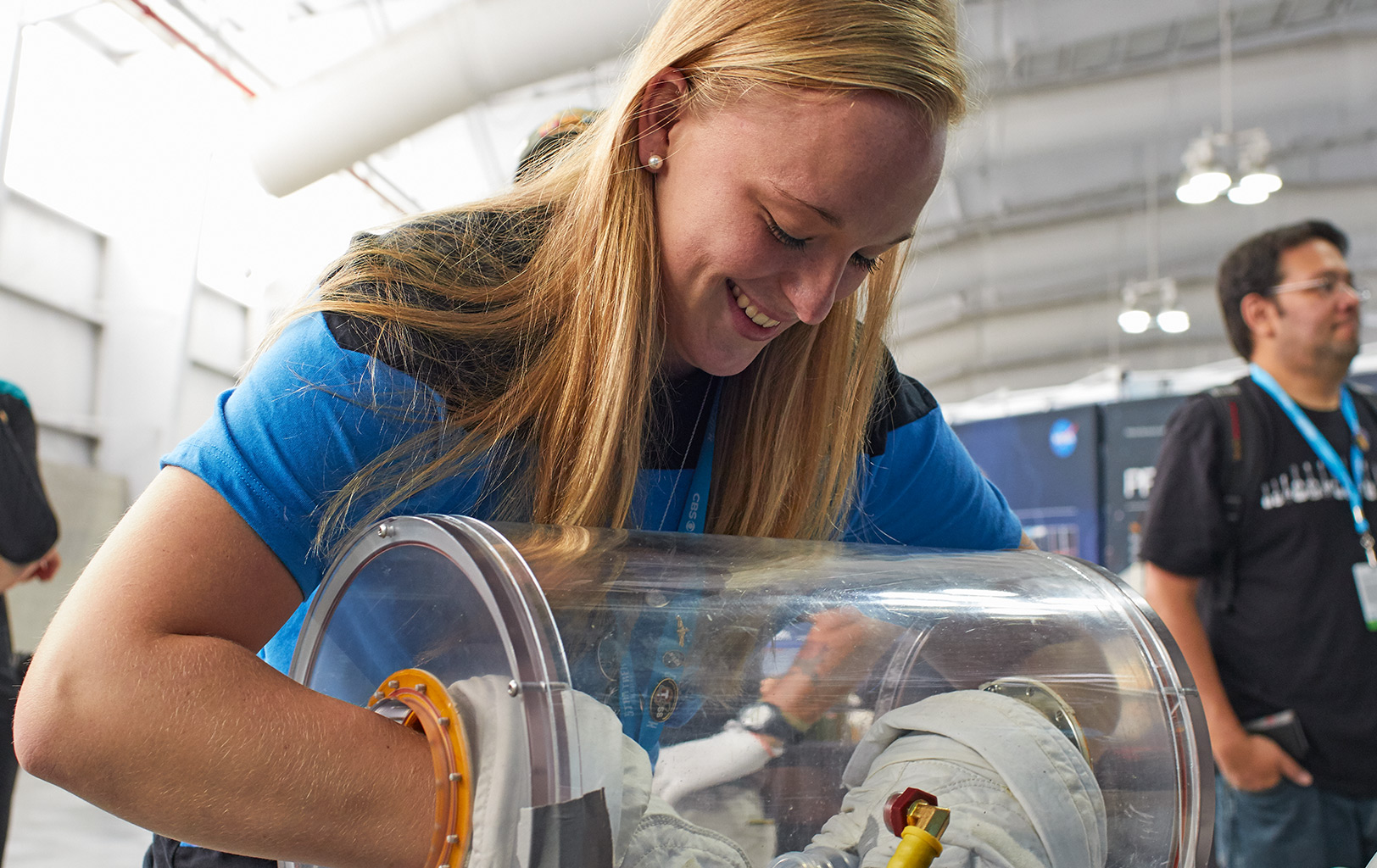
Samantha Mathewson joined Space.com as an intern in the summer of 2016. She received a B.A. in Journalism and Environmental Science at the University of New Haven, in Connecticut. Previously, her work has been published in Nature World News. When not writing or reading about science, Samantha enjoys traveling to new places and taking photos! You can follow her on Twitter @Sam_Ashley13.
